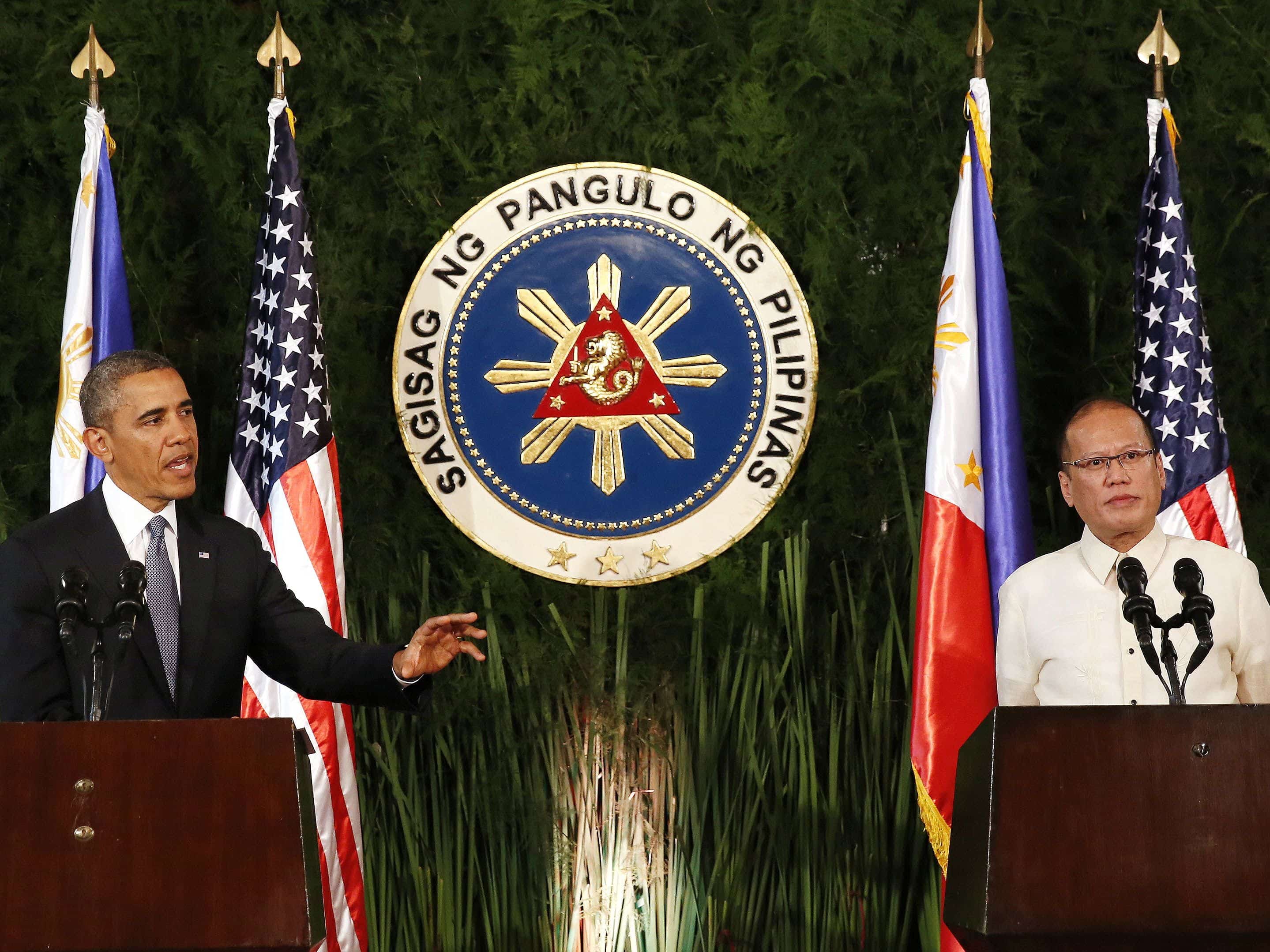The Aquino administration says it has created an inter-agency committee to look into extrajudicial killings and other human rights violations in the Philippines.
The Aquino administration says it has created an inter-agency committee to look into extrajudicial killings and other human rights violations.
President Benigno Aquino III made the announcement when a journalist asked him during the 28 April 2014 press conference, held on the first day of US President Barack Obama’s two-day state visit, what he was doing to address the high number of journalists killed in the Philippines and the low number of killers convicted since he took office in 2010.
Ed Henry of Fox News asked the Philippine President, “As a journalist, I’d like to ask you, why 26 journalists have been killed since you took office? And I understand that there have only been suspects arrested in six of those cases. What are you doing to fix that?”
Excluding the 2009 Ampatuan Massacre, Aquino’s presidency has the highest average number of journalists killed per year compared to past presidencies since 1986. As per CMFR’s count, 22 have been killed for their work since Aquino became President in 2010.
On 23 November 2009, 58 people, 32 of whom were journalists and media workers, were killed in a single election-related incident of violence in Ampatuan town, Maguindanao province.
Since 1986, only 13 cases have convictions and only gunmen have faced justice. No mastermind has ever been convicted.
Aquino said his administration has created, “An inter-agency committee to look on extra-legal killings, enforced disappearances, torture, and other grave violations of the right to life, liberty and security of persons.”
Aquino did not mention which committee was created but on 22 November 2013, he signed Administrative Order 35 that created the “Inter-agency committee on extra-legal killings, enforced disappearances, torture and other grave violations of the right to life, liberty and security of persons.”
According to a report from GMA News, Justice Secretary Leila de Lima sits as the chairperson of the committee created by AO 35.
However, Aquino admitted that, “Unfortunately, speed is not a hallmark of our current judicial system, and there are various steps, laws, amendments, particular laws, even a rethink of the whole process to try and ensure the speedy disposition of justice.”
He recalled that “judicial reform” was one of his promises when he ran for office but it was still “a work in progress.”
“Perhaps we are very sensitive to personal relationships by the people who are deceased, who are killed not because of professional activities but, shall we say, other issues. But having said that, they were killed; that is against the law. The people will have to be found, prosecuted and sent to jail,” Aquino said.
It was the first time since the 2010 election that Aquino has admitted the need for judicial reform. CMFR has listed 14 non-work-related killings of journalists in addition to 22 that were work-related.
The Philippines has retained its third place ranking in the 2014 Committee to Protect Journalists’ Impunity Index, behind Iraq and Somalia. The Index ranks each country on the basis of the number of convictions of the killers of journalists relative to population. “Impunity” refers to the exemption from punishment of the killers of journalists.
The Index was released only a week after another journalist was killed in the Philippines, which has “held the third worst spot on the Index since 2010,” said CPJ.
On 6 April 2014, tabloid reporter Robelita “Ruby” Garcia was shot inside her home, in front of her family. In her dying moments, she said a police officer whom she said she had criticized could have been responsible. The Aquino administration said it is taking the killings seriously.



